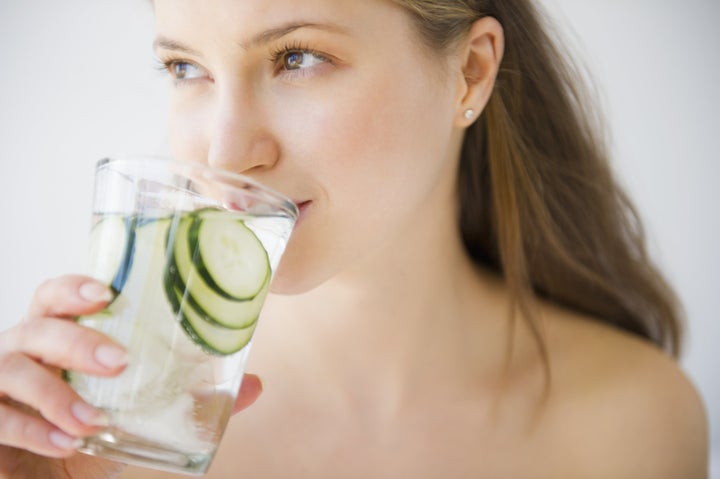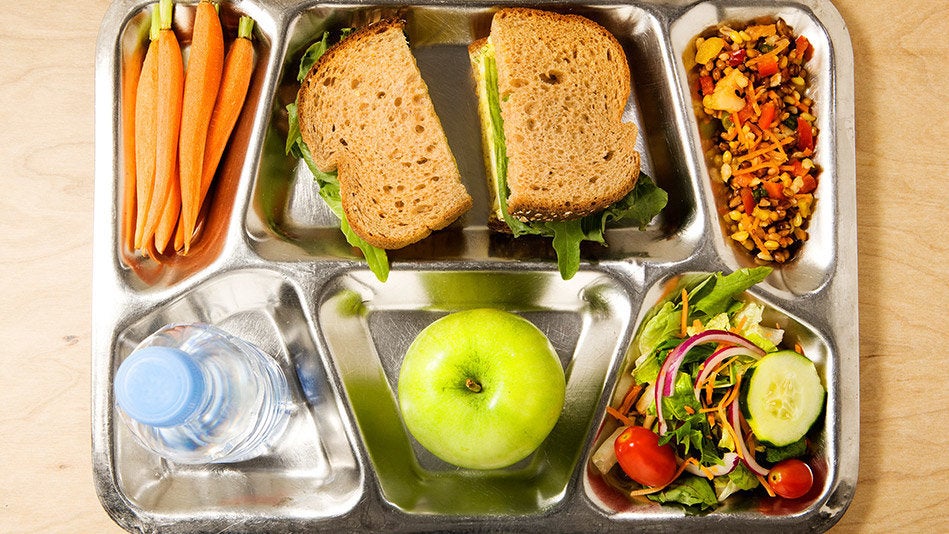
There’s only one drink that can keep your cells functioning properly, help skin look as youthful as possible and detoxify your body.
That magic elixir is water, and some Americans just don’t drink enough of it. Experts from the U.S. Centers for Disease Control and Prevention found in 2013 that 43 percent of adults drink less than four cups of it per day. This figure includes 7 percent of American adults who drink no water at all.
In general, the CDC says that Americans have no reason to worry about dehydration if they’re doing three things: making water their main choice of drink, drinking water when thirsty and drinking water with meals.
But the first step to drinking more water is to figure out how much of it you need in the first place. For a long time, experts have generally said that everyone should drink at least eight cups of water a day, but it turns out that our needs vary depending on who we are, how much activity we do, what climate we live in and how much hydration we get from other sources, like non-water beverages and water-rich foods like fruits and vegetables. And people who are sick need to drink even more water to make up for the loss of fluids from diarrhea and vomiting.
The Institute of Medicine, an independent and non-profit scientific organization, says that men aged 19 and over should generally take in at least 3.7 liters of total water every day ― about 15.6 cups a day. Women ages 19 and up should take in 2.7 liters of total water every day, which is about 11.4 cups a day. And if pregnant or breastfeeding, the recommendations go even higher, to 12.6 cups and 16 cups, respectively.
However, keep in mind that these amounts include the water that you consume in food and other beverages too, besides water. Indeed, just like the CDC, the IOM does not recommend a set amount of water we should drink every day ― just that we should drink when thirsty and drink beverages at meals.
It’s impossible for most Americans to calculate how much water they’re getting from food, but experts from the Harvard School of Public Health note that about 80 percent of the water you take in will come from beverages, while about 20 percent comes from food.
Jodi Stookey, a nutrition epidemiologist and hydration researcher at Children’s Hospital Oakland Research Institute, says that the “best” way to see if we’re drinking enough water is not to count our cups, but to watch the color of our urine. If it’s yellow, that means your cells are shrinking and need more hydration. Drink enough water throughout the day until your urine is light-colored.
“Light colored/clear urine means the body is not working to reserve [water],” said Stookey. “The cells have all the water they want.”
If you’ve noticed that you’re thirsty throughout the day, or even mildly dehydrated (headaches, dizziness, dry mouth, constipation) nutritionist Christa Mantey has three tips on how to drink more water.
1. Get a reusable bottle
Do you think water is boring? Flavor it, says Mantey.
"Get a fun, reusable, BPA-free water bottle (perhaps with a fruit infuser) and fill it up your favorite combinations of citrus, cucumber, ginger, mint, herbs or whatever seems appealing to you,” she says.
Infusing your water with refreshing, natural flavors can help wean you off juices and sugar-sweetened beverages, as well as liven up the taste.
2. Experiment with different temperatures
Not all water has to be served in a tall glass complete with clinking ice cubes.
"Drink water at a temperature that is right for your body,” says Mantey. "In the winter months, you may want warm or hot water with lemon, ginger or a caffeine-free herbal tea, and in the warmer months, colder water may be more refreshing.”
The CDC also notes that broth soups are another great way to get your water for the day.
3. Avoid sugar water
Skip soda, sports drinks and other sugar-sweetened beverages. Sure, you’re getting your hydration in, but you’re also consuming a lot of other things that your body just doesn’t need, like added sugar.
And don't think calorie-free sodas and drinks are any better. There's some evidence that artificially sweetened drinks like diet soda may lead to weight gain.
“[Drinking water] is a gateway to so many other healthy habit changes,” Mantey concludes. "Drinking more water is usually the easiest dietary change people can make to see quick results."
UPDATE: This story was updated with more information about how to tell if you should drink more water. We also updated information about Jodi Stookey's place of work.
Do you want to be more mindful about eating healthy foods that’ll keep your mind and body at their best? Sign up for our newsletter and join our Eat Well, Feel Great challenge to learn how to fuel your body in the healthiest way possible. We’ll deliver tips, challenges and advice to your inbox every day.
